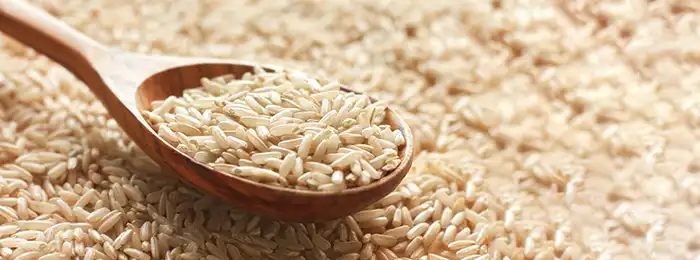Dr. Mohan’s Brown Rice flakes – A healthy replacement for refined rice flakes
Diabetes and cardiovascular diseases are increasing exponentially in India. According to latest estimates, more than 69 million people in India have diabetes. In addition, more than 77 million people have ‘pre-diabetes’ and are at risk of developing diabetes in the near future. While it is true that we Indians are genetically predisposed to developing diabetes, faulty dietary practices and sedentary lifestyle are also key drivers of the recent epidemic of diabetes.
Due to industrialisation and urbanisation, traditional Indian dietary habits are rapidly being displaced by diets that are high in calories, carbohydrates, sugar, fat (energy-dense diets) and salt. In South India, the bulk of carbohydrates and more than 50% of the daily calories are derived from polished white rice and other refined flour-based foods. Our studies have shown that consumption of excessive refined grains increases one’s risk for type 2 diabetes and metabolic syndrome. During rice milling, paddy is shelled to prepare brown rice (unpolished rice, a whole grain which contains 100% bran and germ loaded with lot of nutrients). Further polishing of brown rice leads to the production of white rice, with the loss of bran and germ, and consequently its dietary fibre, proteins, vitamins, minerals and other health beneficial phytochemicals. Consumption of white rice-based food preparations as staple choices leads to higher dietary glycemic load (GL) and glycemic index (GI) (a scale which ranks carbohydrates containing foods based on the blood glucose raising potential upon consumption relative to the GI of glucose set to a scale of 100). Foods high in GI and GL elicit higher insulin responses and subsequently lead to insulin resistance, type 2 diabetes and worsen glycemic control in those with diabetes. Our previous research has shown that commonly consumed white rice varieties such as sonamassuri, ponni and surti kolam are high in GI.
Whole grain cereals with intact dietary fibre contain higher levels of unavailable carbohydrates (non-starchy polysaccharides) compared to refined/polished grains. Such whole grain-based foods are helpful in reducing the GL of diets. Switching over to low GL and lower GI foods are highly beneficial in the prevention and management of diabetes and obesity.
Rice is consumed in a variety of forms across India. Apart from plain cooked rice, it has been utilised for the preparation of idli, dosa, popped rice (nel pori in tamil), expanded rice (pori in tamil), rice flakes (aval in tamil), sevai (string hoppers), and grits/rava. Among these, flaked rice is one of the most important rice based products. It is mainly consumed in the form of upma/poha in southern, eastern, north eastern and western regions of the country.
Our studies have shown that brown rice (unpolished rice) in the form of plain cooked rice and also in some of the traditional south Indian preparations (sambar rice, khichidi, idli, dosa etc.,) elicit lower glycemic responses as compared to white rice. Brown rice is versatile and could be a functional ingredient in whole grain-based health foods. It can be a healthy replacement for white rice in many traditional preparations such as idli, dosa, string hoppers, adai etc. Currently available white rice flakes are fibre depleted and flaked brown rice is scarce in the Indian market. Hence, efforts were undertaken at MDRF to flake brown rice suitably and its physico-chemical and glycemic properties were evaluated.
In India, the traditional process of flaking involves soaking paddy in excess water, roasting and flaking either by pounding the paddy in a wooden mortar and pestle (traditional method) or in an edge-runner. In both the processes, the husk and the outer bran, gets separated simultaneously and the internal grain becomes flattened. Like rice polishing, during this process also, the outer bran which is rich in dietary fibre and many other phytochemicals are lost, thus resulting in a fibre-depleted product. Hence, flakes that are commonly available and consumed in India are highly refined.
Roller flakers offer the convenience of flaking brown rice without removal of bran. Experiments were carried out at MDRF to prepare flaked brown rice in roller flakers. For this, brown rice was suitably processed, roller flaked to desired thickness and dried in controlled conditions. Flaked brown rice prepared by this unique process is known to have a lower GI as compared to that of market refined rice flakes. Apart from this, it has good sensory properties, cooks to soft texture and is a convenient product. It is versatile and can be used in all rice flake-based preparations like flakes upma/poha. It has a promising application in convenience foods as the cooking time is considerably lower as compared to brown rice. It can be dry roasted and seasoned with spices to prepare a ready-to-eat snack. Development of brown rice flake-based snack is already in progress at MDRF.
Flaked brown rice may be a healthier option to conventional refined rice flakes as it contains higher levels of dietary fibre as well as bran-associated nutrients and phytochemicals. Adoption of whole grain-based products like flaked brown rice in the diet helps in improving the quality of diet.



